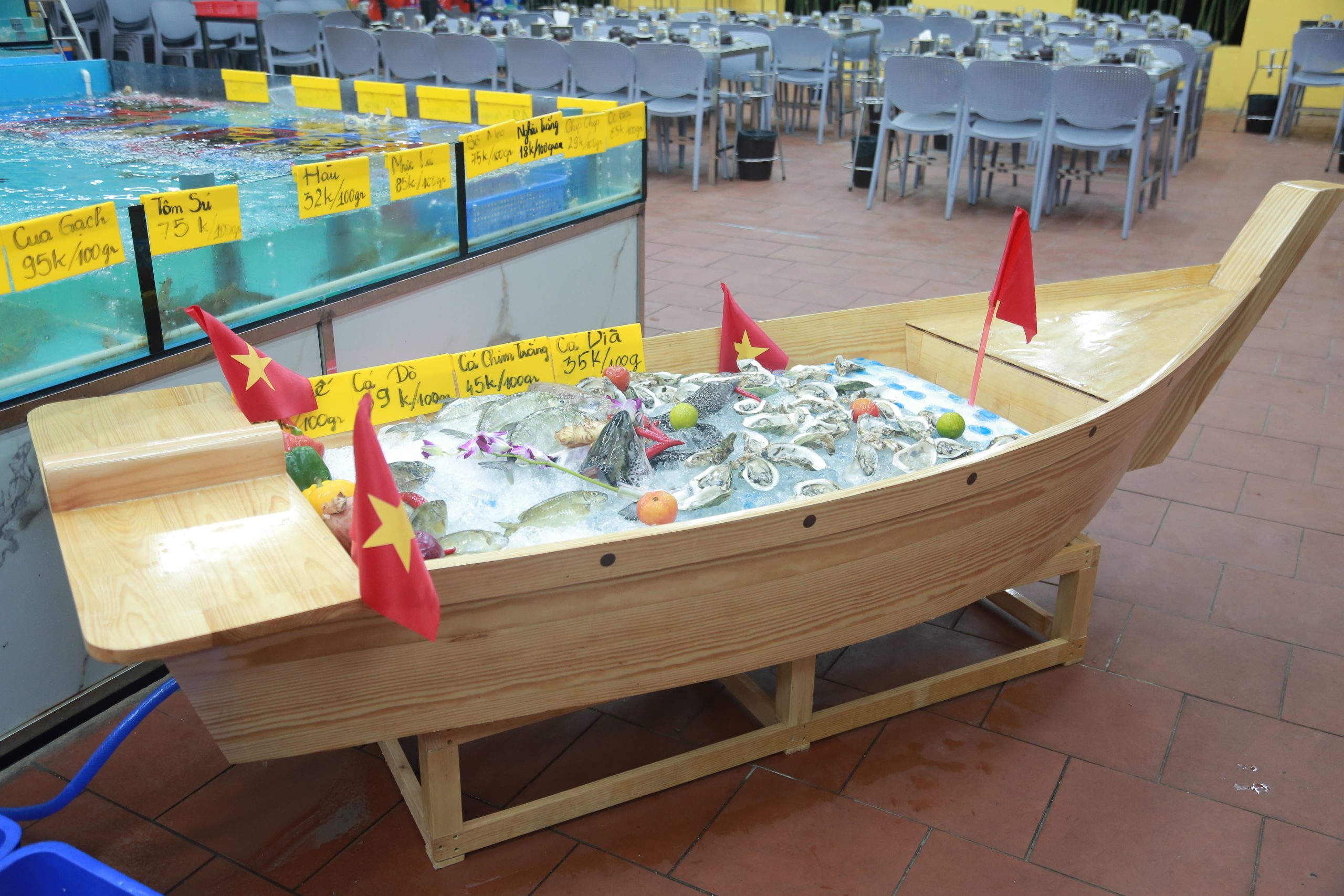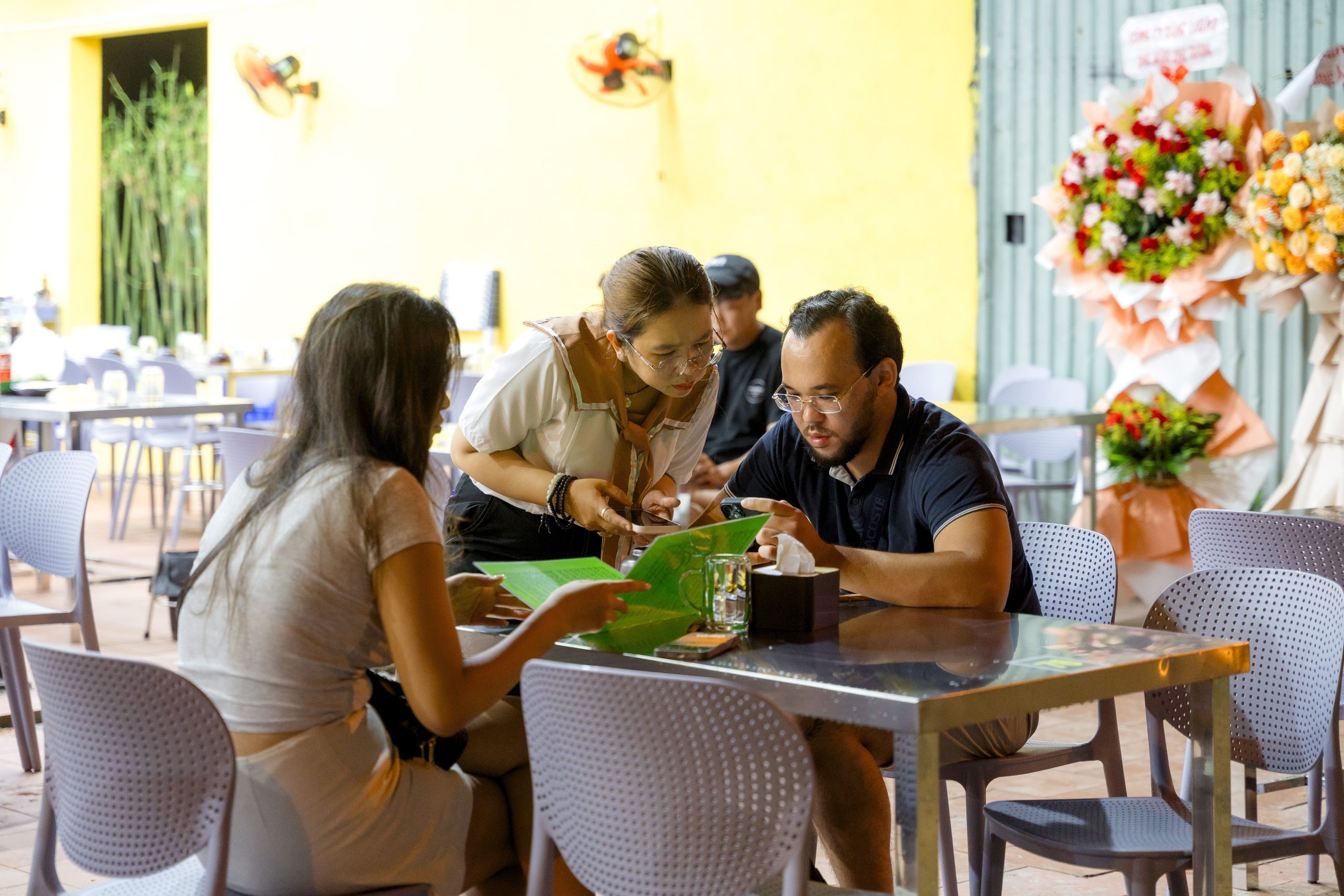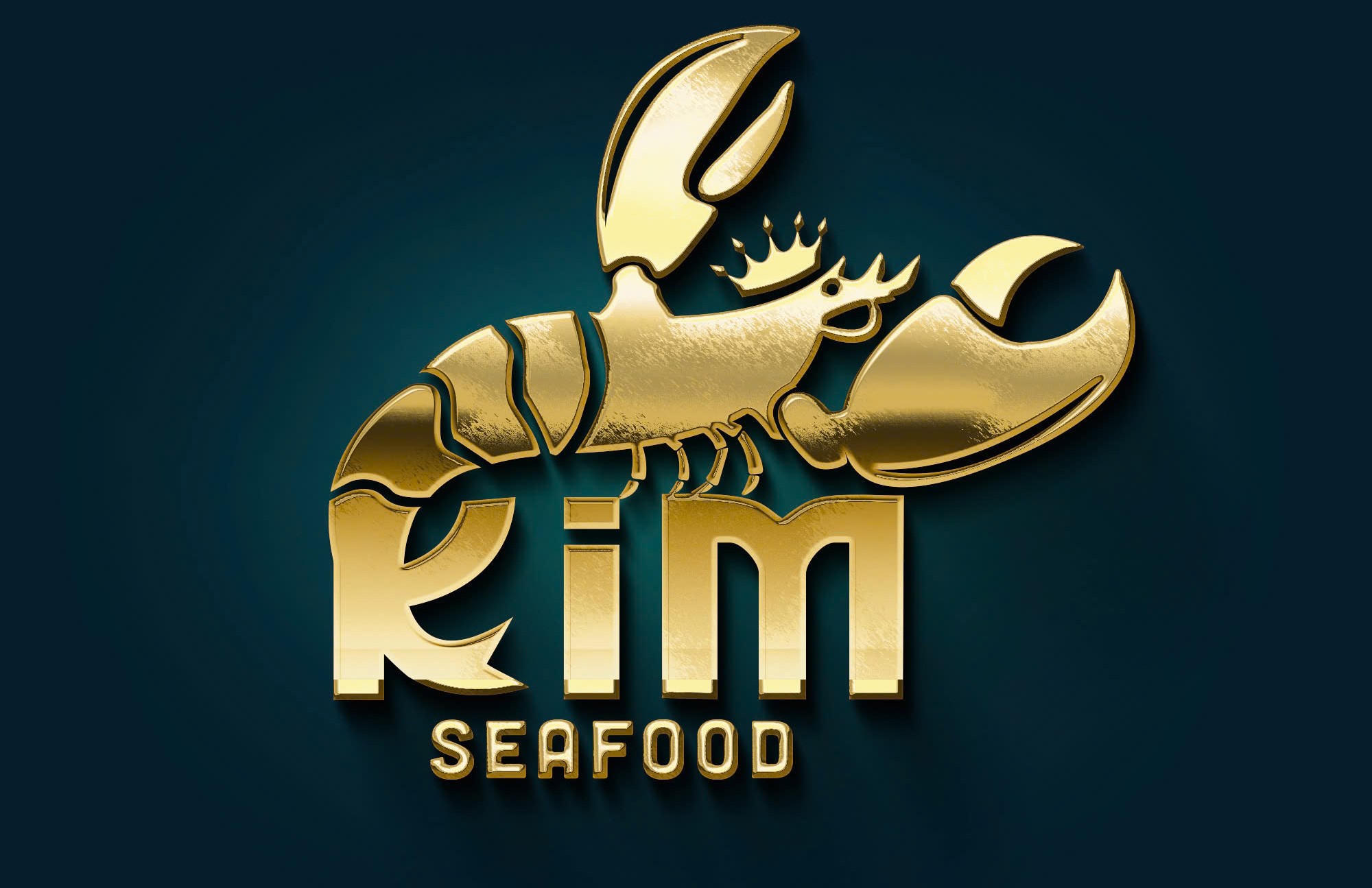Unveiling the Best Korean Seafood Da Nang Experience: A Deep Dive into Kim Seafood and Beyond
Introduction: Korean Seafood Da Nang – Why Da Nang is the Next Seafood Paradise for Korean Tourists
Da Nang, the jewel of Central Vietnam, has rightfully earned its reputation as a world-class tourist destination. With its pristine beaches, luxurious resorts, and the iconic Dragon Bridge, it’s a city that effortlessly blends natural beauty with modern sophistication. Over the past decade, a quiet but profound phenomenon has taken place: Da Nang has become a second home for Korean travelers. From the convenience of direct flights to the familiarity of Korean-friendly signage and services, the city caters exceptionally well to this demographic.
However, the magnetic pull goes beyond just the scenery and convenience; it lies in the gastronomic scene, specifically the unbelievably fresh and affordable seafood. While Korean cuisine itself is rich in exceptional seafood dishes, the unique experience of selecting live, exotic catches from bustling tanks and having them prepared with a distinctive Vietnamese flair—often tailored to the preference of Korean guests—is simply irresistible.
This comprehensive guide will explore the ultimate destination for this culinary quest, focusing on the renowned Korean Seafood Da Nang as a prime example of the exceptional Korean Seafood Da Nang experience. We will detail what makes this and similar establishments so appealing to the Korean palate, covering everything from menu favorites and price points to the unique atmosphere and specialized services that make a seafood dinner in Da Nang an unforgettable part of the Korean travel itinerary. If you are searching for the freshest, most delicious, and most authentic Korean Seafood Da Nang, you’ve found your ultimate resource.
1. The Kim Seafood Phenomenon: A Benchmark for Korean Seafood Da Nang
While many seafood restaurants line the shores of My Khe Beach, specific establishments rise above the rest due to their understanding of and dedication to the Korean market. Kim Seafood Da Nang, a popular name frequently buzzing in Korean travel blogs and social media, exemplifies this tailored approach. It has positioned itself not just as a fresh seafood restaurant, but as a Korean-friendly culinary haven.
1.1. The Unmatched Freshness: The Foundation of Kim Seafood’s Appeal
The primary reason for Kim Seafood’s success among Korean patrons is its uncompromising focus on freshness. Vietnam’s central coast is a rich fishing ground, and establishments like Kim Seafood capitalize on this by maintaining vast arrays of live tanks.
- The Live Tank Experience: Upon entering, guests are greeted by tanks teeming with vibrant life—lobsters, mantis shrimp, clams, scallops, and a variety of exotic fish. This “farm-to-table” transparency is highly valued. Patrons, particularly Korean families and groups, can personally select their catch, ensuring maximum freshness. This direct interaction minimizes the skepticism often associated with seafood consumption in a foreign country.
- A “Just-Caught” Difference: The freshness directly translates into a superior flavor and texture that is hard to replicate. The succulent meat of a live-selected lobster or the firm, clean taste of a freshly steamed fish is the core of the Korean Seafood Da Nang draw.
1.2. Catering to the Korean Palate: Specialized Menu and Preparation

What distinguishes a “Korean-friendly” seafood restaurant is not necessarily a Korean menu, but rather the subtle ways Vietnamese dishes are adapted to suit common Korean tastes. Korean Seafood Da Nang has mastered this art.
Essential Dishes that Resonate with Korean Visitors
- Grilled Shellfish with Cheese (Phô Mai Nướng): This is arguably the biggest crowd-pleaser. Scallops, oysters, and sea urchins are often grilled and topped with a generous layer of melted cheese and butter. This savory, rich, and slightly sweet flavor profile strongly appeals to Korean diners, who appreciate the combination of fresh seafood and creamy, comforting dairy.
- Garlic Butter Sauce (Sốt Bơ Tỏi): A simple but powerful preparation, often used for premium items like lobster and mantis shrimp. The rich, aromatic garlic butter sauce is perfect for dipping and mixing with fried rice, offering a familiar, hearty flavor.
- Tamarind Sauce Crab (Cua Sốt Me): While inherently a Vietnamese flavor, the sweet and sour notes of the tamarind sauce are intense and savory, mirroring the complexity of some Korean spicy and sweet dishes. The restaurant often ensures the crab is pre-cracked, a service that significantly improves the dining experience and is highly praised in Korean reviews.
- Complimentary Kimchi and Side Dishes (Banchan): Many Korean-friendly restaurants, including those aspiring to the Korean Seafood Da Nang standard, provide complimentary or readily available Kimchi and simple Korean side dishes. This touch of home comfort is a major selling point.
- Spicy Seafood Hot Pot (Lẩu Hải Sản Cay): Offering a hot pot with a broth that can be adjusted to a spicier, more jjigae-like (Korean stew) profile satisfies the Korean craving for a communal, flavorful, and often spicy soup-based finisher to the meal.
1.3. Service and Atmosphere: The Korean-Friendly Ecosystem
Beyond the food, the service and environment at Korean Seafood Da Nang play a crucial role in its popularity.
- Language and Communication: The presence of Korean-speaking staff, or at least a menu translated into Korean, eliminates the anxiety of ordering. This simple convenience is a huge draw for Korean tourists.
- Speed and Efficiency: Korean guests often appreciate fast, efficient service, especially when traveling with family. Restaurants catering to this demand are highly rated.
- Space and Seating: Many Korean groups travel with multiple generations, requiring spacious seating. Kim Seafood often provides both vibrant outdoor seating and large, air-conditioned private rooms (like the ones often seen in reviews) that are perfect for big family gatherings, offering comfort away from the tropical heat.
2. Optimizing the Experience: How to Order the Ultimate Korean Seafood Da Nang Feast

Navigating the menu and the live tanks can be daunting. Here is a guide on how to maximize your dining experience at Kim Seafood or any top-tier Da Nang Seafood for Koreans spot.
2.1. The Art of Selection: Pricing and Negotiation
The key to a great seafood meal in Da Nang is understanding the pricing structure.
- Price Per Kilogram: Seafood is typically priced by the kilogram (kg). Always confirm the price before selection. Don’t be afraid to use your phone’s calculator to verify the final cost.
- The Weighing Process: Ask to see your chosen item weighed. This is standard practice and ensures transparency. For large items like lobster or mud crab, the price can vary depending on the size (small, medium, large).
- The “Korean Discount” Myth: While overt negotiation is less common in established, high-traffic restaurants like Kim Seafood, checking the price and asking about seasonal specials is always wise. The real value is in the high quality and massive portion sizes compared to international prices.
Bridging the Gap: Why Kim Seafood Defines the Korean Seafood Da Nang Experience
This phenomenal demand from Korean tourists for high-quality ocean fare has driven a unique evolution in the local dining scene. While traditional Vietnamese seafood remains the backbone, the most successful establishments, like Korean Seafood Da Nang, are those that have learned to anticipate and exceed the expectations of the Korean clientele. It’s not just about selling fresh crab; it’s about providing a culturally sensitive dining environment.
From offering high-heat grills for a smoky finish to ensuring the omnipresence of garlic and chili preparations, the synergy is palpable. Therefore, when discussing the pinnacle of Korean Seafood Da Nang, we are talking about a specific type of restaurant: one that flawlessly merges the unparalleled freshness of the Vietnamese coastline with the robust, communal dining preferences that define Korean food culture. Our detailed review of Korean Seafood Da Nang will show exactly how this establishment has set the benchmark for the best Korean Seafood Da Nang seeking an authentic, yet familiar, culinary adventure near the famous My Khe Beach.
3. Beyond Kim Seafood: Da Nang’s Wider Appeal to Korean Tourists
While Kim Seafood is a stellar example, the allure of Korean Seafood Da Nang is a city-wide phenomenon, supported by Da Nang’s overall transformation into a Korean-friendly hub. Understanding this context further solidifies why a seafood feast here is a mandatory stop for Korean travelers.
3.1. Proximity to My Khe Beach: The Ultimate Location Advantage
Most top seafood restaurants, including prominent contenders like Bé Mặn or Mộc Quán (often mentioned alongside Kim Seafood in local travel guides), are strategically located along the Võ Nguyên Giáp coastal road, directly opposite My Khe Beach.
- A Scenic Dining Experience: The ability to enjoy an expansive seafood meal within earshot of the ocean is a luxury few Korean coastal cities offer at this price point. The atmosphere—cool evening breeze, neon lights, and the hum of a busy coastal city—is part of the draw.
- Accessibility for Tourists: The My Khe area is the primary accommodation hub for Korean tourists, making these restaurants easily accessible by taxi or a short walk from major hotels and resorts. This convenience cannot be overstated for a spontaneous, late-night dinner.
3.2. Price vs. Value: An Unbeatable Proposition
The most compelling argument for the Korean Seafood Da Nang experience is the exceptional value. A seafood feast that would cost hundreds of dollars in Seoul or Busan—featuring live lobster, king crab, and exotic shellfish—can often be enjoyed in Da Nang for a fraction of the price.
- High-Quality, Low Cost: This price differential allows Korean tourists to indulge in premium seafood items, like large crabs and lobsters, that might be reserved for special occasions back home. This “affordable luxury” creates powerful word-of-mouth marketing among the Korean travel community.
- The All-Inclusive Meal: Unlike many dining scenes where sides and service quickly inflate the bill, Da Nang’s seafood spots often offer generous portions, free iced tea, and minimal upcharges for standard preparations, contributing to the feeling of a truly valuable experience.
4. Addressing Common Concerns: Tips for a Seamless Experience

As a primary resource for those seeking the best Korean Seafood Da Nang, it’s important to address practicalities and common tourist concerns.
4.1. Hygiene and Safety
Concerns about food safety are universal. Reputable establishments like Kim Seafood Da Nang adhere to high standards.
- Look for Live Tanks: The very act of choosing from a live tank is the best guarantee of freshness. If the seafood is moving, it is fresh.
- Check the Turnover: High-traffic restaurants generally have a rapid turnover of stock, meaning the seafood hasn’t been sitting in the tanks for long. Busy places are usually the safest places.
4.2. Navigating the Crowds
Popular seafood restaurants in Da Nang, especially during peak season or holidays like the Korean Lunar New Year (Seollal) or Chuseok, can be incredibly busy.
- Early Dinner Strategy: Dining slightly earlier (5:00 PM – 6:00 PM) can help avoid the primary 7:00 PM rush, allowing for better service and seating options.
- Reservations: For large groups (4 or more), calling ahead for a reservation, especially for one of the desirable air-conditioned indoor rooms, is highly recommended.
4.3. Payment Methods
While credit card acceptance is growing, cash remains king, especially for seafood establishments.
- Vietnamese Dong (VND): Always carry enough cash in VND to cover your meal, as it simplifies the transaction and often ensures the best exchange rate.
- USD/KRW Acceptance: Some establishments will accept US Dollars or Korean Won, but the exchange rate offered by the restaurant may be unfavorable.
5. Conclusion: Kim Seafood – The Epitome of the Korean Seafood Da Nang Journey
Da Nang is more than just a destination; it’s an experience tailored for the modern Korean traveler. And at the heart of this experience lies the ritual of a magnificent, fresh seafood dinner. The combination of Vietnam’s bountiful coastal waters, the skilled local chefs, and the thoughtful adaptations made for the Korean palate—such as the beloved grilled cheese shellfish and efficient, transparent service—creates a truly unique offering.
Korean Seafood Da Nang, by maintaining exceptional quality and actively catering to this specific market, has rightly earned its place as a leader in the Korean Seafood Da Nang scene. It embodies the perfect blend of exotic Vietnamese coastal dining and familiar Korean comfort. Whether you are a first-time visitor or a seasoned traveler to Da Nang, a trip to this or a similarly high-quality establishment is not just a meal; it’s the cornerstone of your entire vacation.
From the moment you select your lively catch to the final spoonful of savory fried rice, the promise of exceptional quality, value, and a truly unforgettable dining experience is fulfilled. For those looking for the ultimate Korean Seafood Da Nang with a distinct Korean touch, your search ends here. Book your table, choose your lobster, and prepare for the finest seafood feast Central Vietnam has to offer.
Location and Opening Hours: Where to Find Kim Seafood
- Fanpage: Here
- Address: Kim Seafood, A2.01 Ly Nam De, An Hai Trung, Son Tra, Da Nang, Vietnam.
- Phone: 0916111143
- Opening Hours: 10:00 – 23:00
- Email: hello.kimseafood@gmail.com



